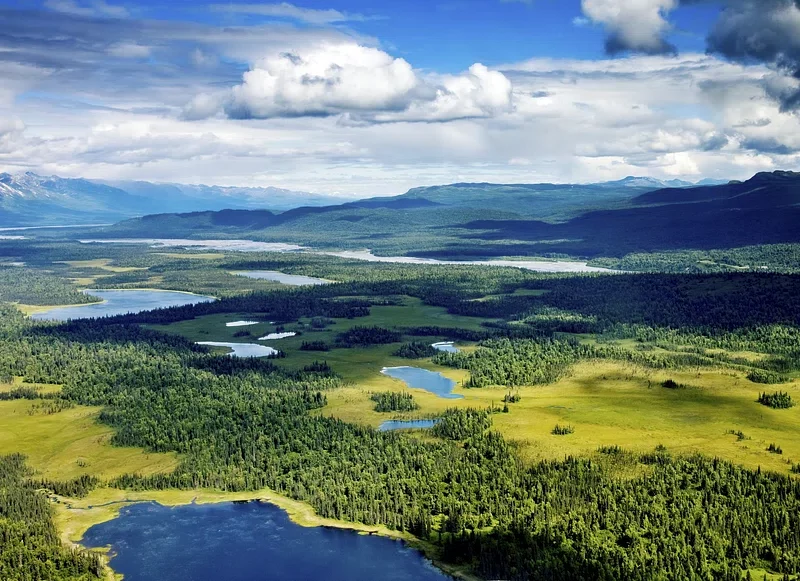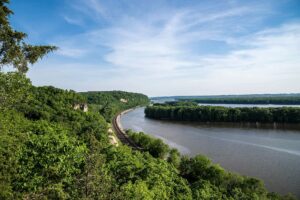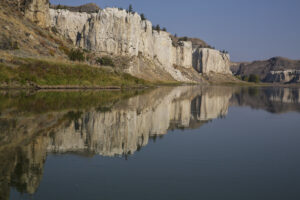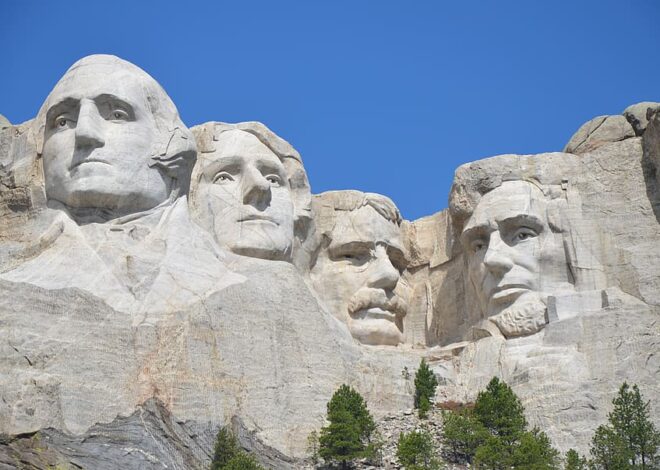
The Mighty Flow: Exploring the Biggest Rivers in the US
Introduction
Rivers, with their relentless flow and intrinsic connection to the landscape, are the lifeblood of many regions, shaping ecosystems, providing resources, and serving as conduits of transportation. In the United States, a vast network of rivers crisscrosses the nation, each with its unique characteristics and contributions to the country’s geography and culture. In this article, we will embark on a journey to explore the biggest rivers in the United States, examining their origins, significance, and the vital roles they play in the nation’s natural and human systems.
Biggest Rivers in the US
Mississippi River
The Mississippi River stands as an iconic symbol of America’s waterways, holding the title of the second-longest river in North America. Originating from Lake Itasca in Minnesota, the river flows southward for approximately 2,320 miles, draining into the Gulf of Mexico. The Mississippi River and its extensive basin touch or pass through 32 U.S. states, influencing the landscapes and livelihoods of millions.

Significance:
- Economic Hub: The Mississippi River serves as a major economic artery, supporting agriculture, industry, and commerce. It facilitates the transportation of goods, including agricultural products, minerals, and manufactured goods.
- Biodiversity: The river and its floodplain harbor diverse ecosystems, providing habitats for a wide array of plant and animal species. The wetlands along the lower Mississippi Delta are particularly vital for migratory birds and marine life.
- Cultural Heritage: The Mississippi River has played a central role in American literature, folklore, and music. It has been immortalized in works such as Mark Twain’s “Adventures of Huckleberry Finn” and is a source of inspiration for countless artists.
Missouri River
The Missouri River ranks as the longest river in North America, stretching approximately 2,341 miles from its headwaters in the Rocky Mountains of Montana to its confluence with the Mississippi River. It traverses a diverse range of landscapes, from mountainous terrain to expansive plains, impacting the ecosystems and communities along its course.

Significance:
- Hydroelectric Power: The Missouri River is harnessed for hydroelectric power generation through a series of dams. These dams contribute to the region’s energy needs and provide flood control measures.
- Navigation: The Missouri River has historically been a vital transportation route, supporting trade and commerce in the central United States. While not as heavily trafficked as in the past, it remains an essential waterway.
- Recreation: The Missouri River basin offers numerous recreational opportunities, including fishing, boating, and camping. It attracts outdoor enthusiasts seeking to experience the natural beauty of the river and its surroundings.
Yukon River
Flowing through the wild landscapes of Alaska and Canada, the Yukon River is a behemoth of the North, stretching over 1,980 miles. It originates in British Columbia, Canada, and winds its way through the Yukon Territory before entering Alaska and eventually draining into the Bering Sea.
Significance:
- Indigenous Heritage: The Yukon River holds immense cultural significance for the indigenous peoples of the region, including the Athabaskan and Yupik communities. It has been a historical lifeline, providing sustenance, transportation, and cultural identity.
- Salmon Run: The river hosts one of the longest salmon runs in the world. Salmon migrate upstream to spawn in the tributaries of the Yukon, sustaining both wildlife and human populations.
- Remote Wilderness: The Yukon River basin encompasses vast wilderness areas, offering opportunities for wilderness adventures, wildlife observation, and connecting with nature in its purest form.
Rio Grande
The Rio Grande, with its name translating to “Big River” in Spanish, serves as a natural border between the United States and Mexico. Originating in the San Juan Mountains of Colorado, the river flows approximately 1,896 miles through the arid landscapes of the American Southwest and the Mexican plateau.
Significance:
- International Border: The Rio Grande forms a natural border for a significant portion of its course, impacting geopolitics, immigration policies, and environmental management. It is a source of both cooperation and contention between the United States and Mexico.
- Water Resource: The river is a crucial water source for agriculture and communities along its course. Water management and conservation efforts are essential due to the arid climate and increasing demands on the river’s resources.
- Biodiversity: Despite its challenges, the Rio Grande supports a variety of plant and animal species, including unique desert ecosystems and riparian habitats. Conservation initiatives aim to preserve the river’s ecological integrity.
Colorado River
The Colorado River carves its way through the dramatic landscapes of the American West, originating in the Rocky Mountains of Colorado and flowing for approximately 1,450 miles. Known for its iconic canyons and deep gorges, the Colorado River plays a vital role in shaping the region’s geology and ecosystems.
Significance:
- Grand Canyon: The Colorado River is responsible for the formation of the Grand Canyon, one of the world’s most renowned natural wonders. Over millions of years, the river’s erosive force sculpted the breathtaking canyon landscapes.
- Water Supply: The Colorado River is a major source of water for agriculture, urban areas, and industries in the southwestern United States. The river’s waters are extensively utilized for irrigation and municipal purposes, supporting a rapidly growing population.
- Environmental Concerns: Due to increasing demands and climate change impacts, the Colorado River faces challenges such as reduced water flow, habitat alteration, and the potential for water shortages. Sustainable water management is crucial to address these concerns.
Conclusion
The biggest rivers in the United States weave a complex tapestry of ecological, cultural, and economic significance. From the iconic Mississippi River, winding through the heartland of America, to the untamed beauty of the Yukon River in the North, each waterway tells a unique story of the landscapes it traverses and the communities it sustains.
As we navigate the flow of these mighty rivers, it becomes evident that their vitality extends far beyond their physical boundaries. They serve as conduits of history, culture, and biodiversity, shaping the very essence of the regions they touch. Understanding and appreciating the importance of these rivers is essential for fostering sustainable practices that ensure their continued health and resilience in the face of evolving environmental challenges.


